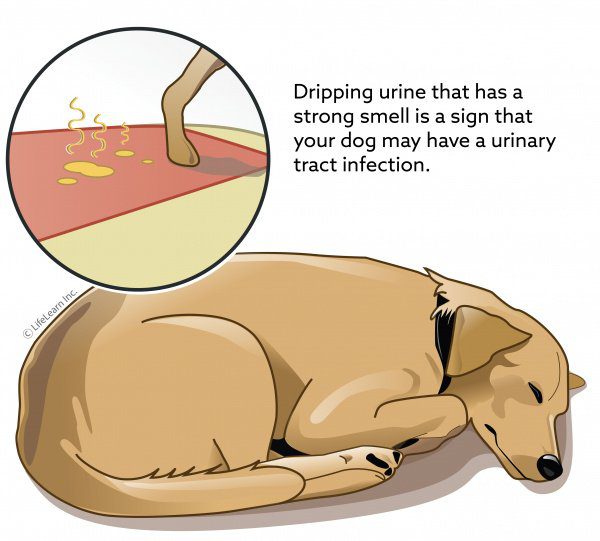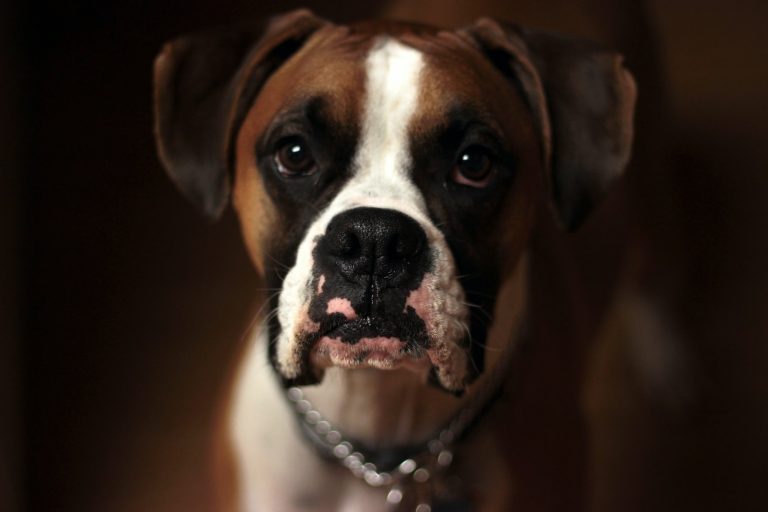Most often it’s very hard to know when your dog is not feeling well and a lot harder to find the reason why his mood has changed. Most of the times the only symptom he’ll show is a bad temper and you will have to figure out what is wrong with him, either by yourself or with the help of a veterinarian.
How Can I Tell if My Dog Has Urniary Problems?
Fortunately, when it comes to urinary problems, they have a way of being observed immediately. You will either see blood in your dog’s urine or a little more strain than usual when he needs to take a wee. Sometimes even abnormal amounts of urine, either too small or too many, may indicate that something’s wrong with your pup. Not to mention that because of urinary problems, a lot of times your dog will have accidents inside your house, which can be very annoying.
Main Reasons for Urinary Problems

1. Urinary tract infections (UTIs)
If you’ve ever had a bladder infection, you’re more likely familiar with the symptoms: the aching feeling that you need to go right in this moment and when you finally get to the toilet, you only dribble a small amount of urine. It’s mostly the same in dogs, although while a simple course of natural remedies like tea or, in more acute stages of antibiotics may help to treat your disease, it’s not that easy with dogs.
You would better take your pup to see a specialist if you notice frequent urination, blood in his urine, straining to urinate and when he finally manages to go out he only dribbles a few drops, crying out while urinating etc.
Treatment
To diagnose the cause of a UTI, your veterinarian will have to analyze a urine sample, but in more complicated cases, blood work or urine culture might be required. After determining the exact type of infection, he will prescribe an appropriate antibiotic, in order to make your dog feel better. Probiotics are helpful adjuncts in preventing recurring UTIs. They are a real help in displacing the bacteria causing the infection.
Bacterial urinary tract infections usually occur in older females or dogs with diabetes.
2. Bladder Stones
Dogs can develop a variety of stones in the urinary tract, just like people. Most commonly they are found in the bladder and kidney, although in dogs the bladder ones are more occurring than the kidney stones. These uroliths, like they are also called, are composed of a variety of minerals and present themselves like rock formations.
Bladder stones may start out as small, but over time they can grow in both size and number, meaning that dogs suffering from this condition will present the following symptoms:
- Breaking housetraining
- More frequent than normal attempts to urinate, without producing much wee
- Straining to urinate
- Crying out during urination
Based on the symptoms, your veterinarian will have to confirm bladder stones, and for that, he will use either an abdominal ultrasound, if the uroliths are small, or even an X-Ray machine if the stones are large.
Treatment
Treatment of this condition depends on the mineral from which the stones are composed. For example, if they are struvite, feeding your pup specific type of food or providing him with urinary acidifiers, in order to change the pH in his bladder will help to dissolve the uroliths. But the ones that are made from other kinds of minerals will most likely need surgery, in order to be removed or lithotripsy, a procedure that breaks up the stones with ultrasonic shock waves. Usually, antibiotics are required to treat the underlying cause and a therapeutic diet that will dissolve the stones. Also, pain medication can be used, if needed. This special diet is formulated to make the dog produce more urine, reduces the concentration of minerals that are an issue, changes the pH of the urine, all of these actions will create a less hospitable environment for bacteria to grow.
Be very careful regarding bladder stones! Sometimes a stone may break free and could become lodged in the urethra, completely blocking it and preventing your dog from urinating. This situation is and needs to be treated like an emergency and without prompt action you may even lose your beloved four-legged friend.

3. Urinary Incontinence
This condition most commonly occurs in spayed female dogs, although it may develop in any individual. It presents as a loss of control of the urethral sphincter, which is the muscles that prevent urine from leaking out of the bladder. Depending on how advanced the problem is, mildly affected dogs may only occasionally leak small amounts of wee, while in extreme cases, subjects will drip urine continuously.
The most common causes of this condition are hormonal imbalance or deficiencies, although persistent UTIs, spinal injury and many others may trigger urinary incontinence.
Treatment
The treatment for incontinence depends on its underlying cause.Phenylpropanolamine (PPA) is used as the most common medication when treating incontinence in dogs. Its role is to strengthen the contraction of the urinary sphincter. Also, hormone replacement therapy may be a good treatment, although it may come with rather risky side effects. Collagen injections are a new therapy and appear to have remarkable results
4. Prostate Problems
Prostate problems are a relatively common cause of urinary symptoms for male subjects (either dogs or people). While non-neutered dogs may develop prostate gland infection or benign hypertrophy (BPH), spay dogs present a higher risk of prostatic cancer.
The prostate is the sexual gland in male dogs. With advancing age, it increases in size and in furry-friend which are intact and over 6 years old, benign prostatic hyperplasia is a very common disorder. This condition affects all the area around the prostate, including the glands and the connective tissues, causing swelling. In result, there will be strain against the rectum and your furry friend will have problems defecating and urinating.
Although it is not life-threatening by itself BPH, it can make your pup more susceptible to other illnesses, along with some symptoms that may become uncomfortable with time. While in the beginning, it may be asymptomatic, with time your buddy will develop constipation, bloody urethral discharge, and reduction in urination and/or defecation.
Treatment
Other prostate problems may include infections, which may respond well to prolonged antibiotic treatment, although sometimes when abscesses are formed, a surgical procedure will be necessary.
If I Think My Dog Has Urinary Problems?
These four conditions are the main urinary problems in dogs. Although in some situations, like a mild UTI you might try to treat the illness yourself, it is better to visit your veterinarian every time you see that something is wrong with your dog’s toilet habits.







